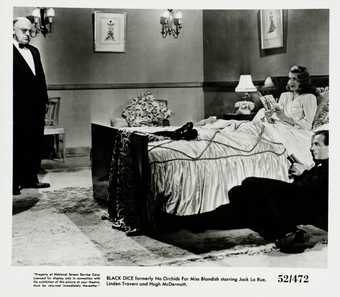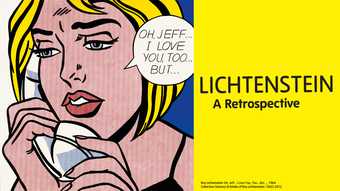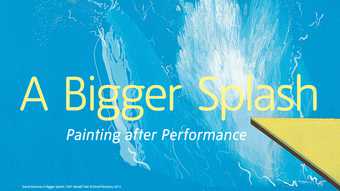
John Baldessari
[no title] (1982)
Tate
Are we all critics? How can we learn through criticism? This five-week course offers a unique exploration of the art of criticism, during which you have the opportunity to hone your critical eye and develop your critical faculties. Set after hours in the galleries of É«¿ØŽ«Ãœ, we take our inspiration from the environment around us and base ourselves each week in a different collection display or temporary exhibition.
Each of the first four sessions explores a different critical perspective â the curator, the audience, the artist or artwork, and the critic. To actively encourage your growth as a critic, sessions combine a variety of approaches, from talks by the course tutor, general discussion, small-group work, individual tasks (some of these written), and peer and tutor feedback on your work and ideas.
In the final session you have a chance to produce a short piece of critical writing that responds to a chosen artwork, artist, display or critique. These will then be edited by the course tutor and published as a collaborative collection on °Õ²¹³Ù±ðâs website. No prior knowledge is needed to take part in this course. You are encouraged to engage with a wide variety of material and approaches and to discuss your own interpretations in a supportive setting.
Dr Lucy Scholes has a PhD from Birkbeck, University of London, and used to teach at Goldsmiths. She now works as a freelance critic, writing for a variety of publications including Critical Quarterly, Untitled Books, The Times Literary Supplement, The Daily Beast, The National, The Independent and The Observer. Lucy previously taught the popular É«¿ØŽ«Ãœ courses Projecting Desire: Sex, Psychoanalysis and Cinema, Hidden, and most recently, The Apathy Complex.
Course outline
Week One: The Curator
25 February
Venue: Structure and Clarity (Level 4 West)
É«¿ØŽ«Ãœ is a uniquely curated space, its thematic hang actively creating dialogues across art movements, gender and geographies that wouldn't be possible in a strictly chronological layout. In this first week we'll base ourselves in the Structure and Clarity gallery, exploring the effectiveness of this technique, paying particular attention to the juxtaposition inherent in the Matisse and Bridget Riley pairing in the first room and how this, and other curating practices, inspire or encourage particular critical responses in visitors.
Week Two: The Audience
4 March
Venue: A Bigger Splash (Level 3 East)
The Bigger Splash: Painting after Performance exhibition is of special interest to this course as its depiction of fine meets applied art, installation and performance together offer a unique lens through which to explore the relationship between the art work and the audience. Based in the latter rooms of the exhibition â from Edward KrasiÅski to Lucy McKenzie â weâll examine the role that we, the audience, play in the various art works on show, from our presence in the image on offer, our habitation of the psychological space created by the work, or our appreciation of the performative aspect of the piece.
Week Three: The Critic
11 March
Venue: Transformed Visions (Level 3 West)
This week we'll be based in the Transformed Visions gallery. Youâll be provided with a variety of different material to discuss â considerations of the etiquette of hatchet jobs, a footballerâs response to Lucian Freud, historical takes on the subject, and âofficialâ critiques of some of the works on display in the gallery. Is criticism an art form in and of itself? Is it better left to professionals in the field? What qualifications, if any, does one need to be a critic? These are amongst the questions weâll be debating.
Week Four: The Artist/Artwork
18 March
Venue: Lichtenstein Retrospective (Level 2 East)
Having, in the previous sessions, explored various critical responses to art and literature, this week weâll be examining the idea of the artist as critic and the art work itself as critique. Renowned for his works based on comic strips and advertising imagery, coloured with his signature hand-painted Ben Day dots, Lichtenstein's images are a well-known part of modern culture. But weâll be looking at them from the other side of the canvas, exploring the critical commentary that lies beneath the surface of these instantly recognisable pieces.
Week Five: You, the Critic
25 March
Venue: Poetry and Dream (Level 2 West)
In the final session you have a chance to produce a short piece of critical writing that responds to a particular artwork, artist, display or critique. Youâll be encouraged to draw on ideas explored in the previous four sessions. These will then be edited by the course tutor and published as a collaborative collection on °Õ²¹³Ù±ðâs website.
- Download the Critical I anthology (PDF, 116 KB)


